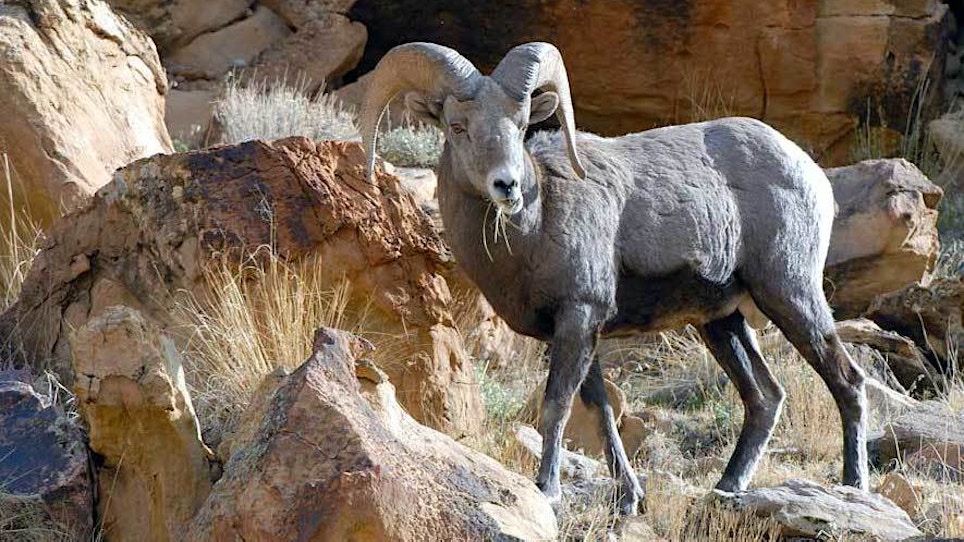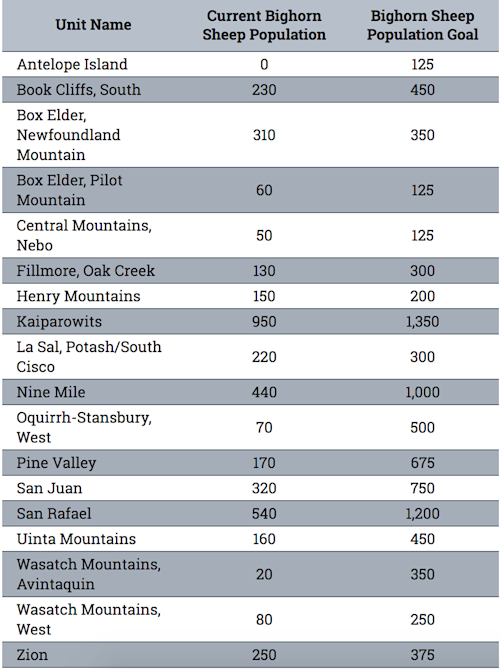
Utah wildlife officials have a 10-year management plan for the state's Rocky Mountain and desert bighorn sheep, including a project to restock Antelope Island. Sheep on the island died in autumn 2018 due to disease and officials want to repopulate the unit. (Photo: Utah DNR)
Hunting bighorn sheep requires a lot of things to be successful, including good equipment, quality optics for spotting, stalking skills and the ability to remain calm when making the shot.
Drawing a tag is a once-in-a-lifetime deal. Planning the trip, having everything go right and coming home with a bighorn sheep is, most likely, exactly what the Utah DNR says it is: a lifetime hunting accomplishment.
The agency recently received approval for its proposed 10-year management plan for the species. In early October, the state's wildlife board approved plans for 18 units that are home to Rocky Mountain or desert sheep.
Here's the info from the DNR about the process and what's coming in the future for Utah's bighorn sheep:
The 10-year statewide management plan for bighorn sheep in Utah was approved in November 2018, and on Oct. 3 the Utah Wildlife Board approved plans for each specific regions with bighorn sheep populations.
Eighteen unit management plans were approved during the Wildlife Board meeting: 11 for Rocky Mountain bighorn sheep and seven for desert bighorn sheep. The combined population objective for these 18 units is a total of 8,850 bighorn sheep.
Currently, there are approximately 4,150 bighorn sheep in Utah. The specific unit management plans include proposals for how to increase the population in each area in a sustainable way.
“There has been some struggle with our bighorn sheep populations recently because of respiratory disease,” Jace Taylor, the bighorn sheep and mountain goat biologist for DWR, said. “Part of our objective is to expand bighorn sheep populations where possible and to maintain the overall population in a sustainable and healthy way across Utah to provide quality opportunities for wildlife viewing and hunting.”
Why Are Numbers Different?
The number of sheep approved for each unit varies, due to the available habitat, water supply and necessary space needed to separate the animals if they get sick. Habitat projects also are included in some of the plans, which will help provide additional suitable habitat for bighorn populations.
DWR biologists also plan to regularly test each of Utah’s bighorn sheep populations for respiratory disease.
One specific unit in the management plans is Antelope Island. The bighorn sheep population on the island experienced a disease outbreak in November 2018, and the entire population there was removed. Part of the management plan for this specific area includes Antelope Island State Park building a fence on the south end of the island before the DWR reintroduces a healthy population of bighorn sheep to the island.
DWR biologists hope to release about 35 wild bighorn sheep on the island in January 2020 and will closely monitor the population for disease. They hope to eventually grow a healthy population of 125 Rocky Mountain bighorn sheep on the island.
Here are the approved totals for bighorn sheep populations on all 18 units:






